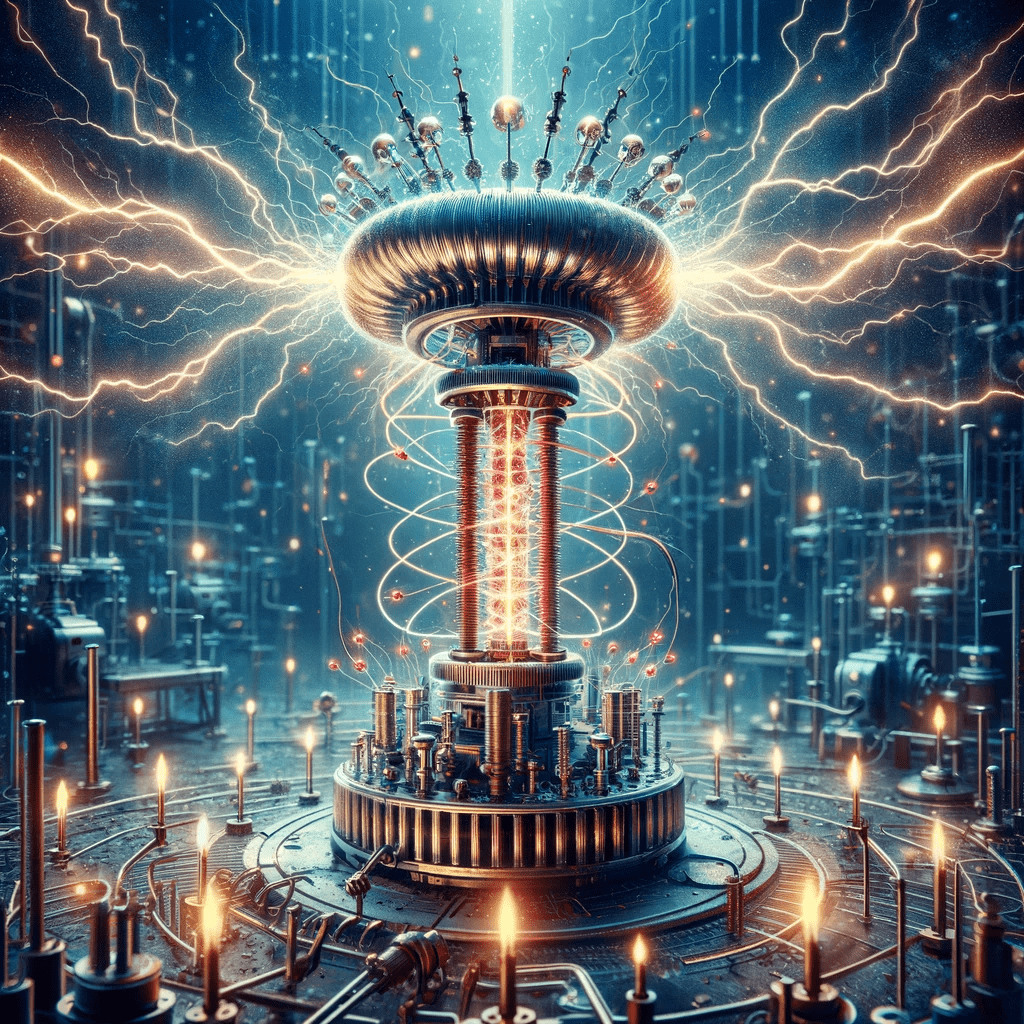Tesla Coils

Tesla coils, a renowned invention in the field of electrical engineering, were developed by the brilliant inventor and visionary, Nikola Tesla, in the late 19th century. Tesla coils are high-frequency, high-voltage resonant transformers designed to produce spectacular electrical discharges. Their primary function is to wirelessly transmit electrical energy and create impressive displays of electric sparks. They have since become a symbol of scientific ingenuity and have found applications in areas such as entertainment, education, and research.
Nikola Tesla, a Serbian-American inventor, developed the first Tesla coil in 1891. Tesla’s motivation was to enable the wireless transmission of electricity, which he believed would revolutionize the world. The coils were initially used in experiments to study the behavior of high-frequency alternating currents, leading to the development of modern-day alternating current (AC) electrical systems.
The science behind Tesla coils is based on the principles of electromagnetism and resonance. A Tesla coil consists of two coupled resonant circuits – the primary and secondary circuits. The primary circuit, which includes a capacitor and a spark gap, is charged by a high-voltage power supply. When the voltage across the spark gap reaches a critical value, it discharges, creating a high-frequency oscillating current in the primary circuit. This oscillating current generates an oscillating magnetic field that induces a high-frequency voltage in the secondary circuit, which is composed of a single, tightly wound coil. The secondary coil’s high voltage output then generates the characteristic electrical discharges.
Tesla coils can produce voltages exceeding one million volts (source: The National High Magnetic Field Laboratory). The high voltages generated by Tesla coils create striking electrical arcs that can span several meters, making them popular in science demonstrations, movies, and theatrical performances.
Tesla coils were a crucial element in the development of the first radio transmitters (source: The Institute of Electrical and Electronics Engineers). Although Guglielmo Marconi is often credited with the invention of the radio, Tesla’s work on wireless transmission using Tesla coils played a significant role in the development of early radio technology.
Modern-day Tesla coils are used for scientific research, including the study of plasma physics and the behavior of electrical discharges in gases (source: The National Institute of Standards and Technology). Researchers at institutions like the National Institute of Standards and Technology employ Tesla coils to study the complex interactions between electric fields and gases, which can lead to advances in areas such as lightning protection and environmental science.
Experts, such as Dr. William Terbo, a renowned authority on Tesla’s work and executive secretary of the Tesla Memorial Society, have highlighted the importance of Tesla coils in understanding wireless energy transmission and the development of modern electrical systems (source: PBS). Terbo states that Tesla’s pioneering work laid the foundation for the wireless communication technologies we use today, such as cell phones and Wi-Fi.
Books on the subject, like “Tesla: Inventor of the Electrical Age” by W. Bernard Carlson, looks into the historical context and significance of Tesla coils. In this book, Carlson discusses the visionary ideas of Tesla and the challenges he faced while attempting to bring wireless power transmission to the masses.
Tesla coils are a fascinating and significant invention in the field of electrical engineering, developed by Nikola Tesla in the late 19th century. They operate on the principles of electromagnetism and resonance, creating high-frequency, high-voltage electrical discharges.

